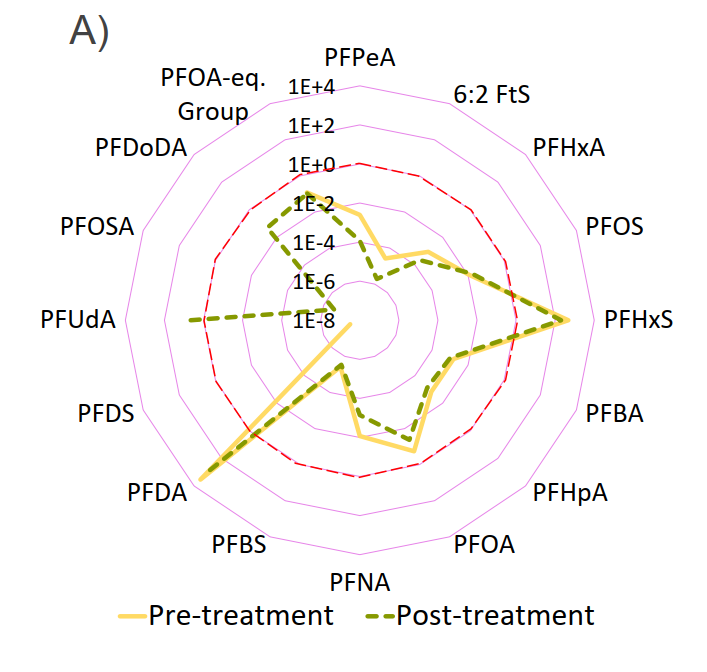The Society of Environmental Toxicology and Chemistry (SETAC) recently hosted its 35th Annual Meeting in Vienna, Austria, from May 12th to May 15th. SETAC conferences are renowned for bringing together professionals from the fields of environmental toxicology and chemistry to discuss sustainable practices and innovations. The theme for this year’s conference, “Innovation for Tomorrow: Progress in Safe and Sustainable Concepts,” emphasized the integration of cutting-edge innovations with safety and sustainability considerations through the implementation and expansion of the Safe and Sustainable by Design (SSbD) approach.
The LIFE SOuRCE project is dedicated to evaluating and reducing human health and environmental risks associated with per- and polyfluoroalkyl substances (PFAS) in groundwater. During the SETAC conference, the project’s activities were showcased, particularly those related to Task C.2.2, which focuses on assessing PFAS-related risks before and after the implementation of the LIFE SOuRCE’s remediation technologies.
A poster titled Evaluating PFAS-Related Human Health and Environmental Risks before and after the implementation of the LIFE SOuRCE Solution was presented, detailing the methodology and results of the Human Health Risk Assessment (HHRA) and the Environmental Risk Assessment (ERA) carried out as part of the project. These risk assessments were based on data from two PFAS contaminated sites, one in Spain and one in Sweden.
For the HHRA performed at the Spanish site, two exposure scenarios were evaluated:
- Scenario 1: Industrial workers exposed to PFAS-contaminated water during cleaning tasks, assessing accidental ingestion and dermal contact.
- Scenario 2: Farmers using groundwater for crop irrigation (2a) and consumers potentially ingesting PFAS through these crops (2b). Lettuce was selected as the test crop, and exposure pathways included ingestion and dermal contact for farmers, and ingestion for consumers (adults and children) through PFAS transferred to crops.
The HHRA results highlighted the significant reduction in toxic and carcinogenic risk achieved thanks to the implementation of the LIFE SOuRCE solution.
For the ERA conducted at the Swedish site, the poster outlined the assessment of PFAS risks to the river ecosystem and fish populations before and after the implementation of the LIFE SOuRCE solution. Although final ERA results were not available at the time of presentation, the assessment will be finalized once concentration data becomes available following the solution’s implementation, which concluded in early April 2025.
SETAC conferences provide a valuable platform for professionals to engage in meaningful scientific exchanges, explore innovative solutions, and contribute to a safer and more sustainable future. The presentation of the LIFE SOuRCE project at this year’s meeting underscored the importance of addressing PFAS-related risks and the effectiveness of innovative solutions in mitigating these risks.


